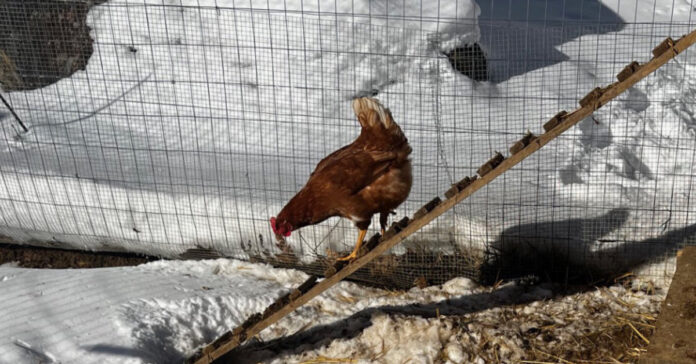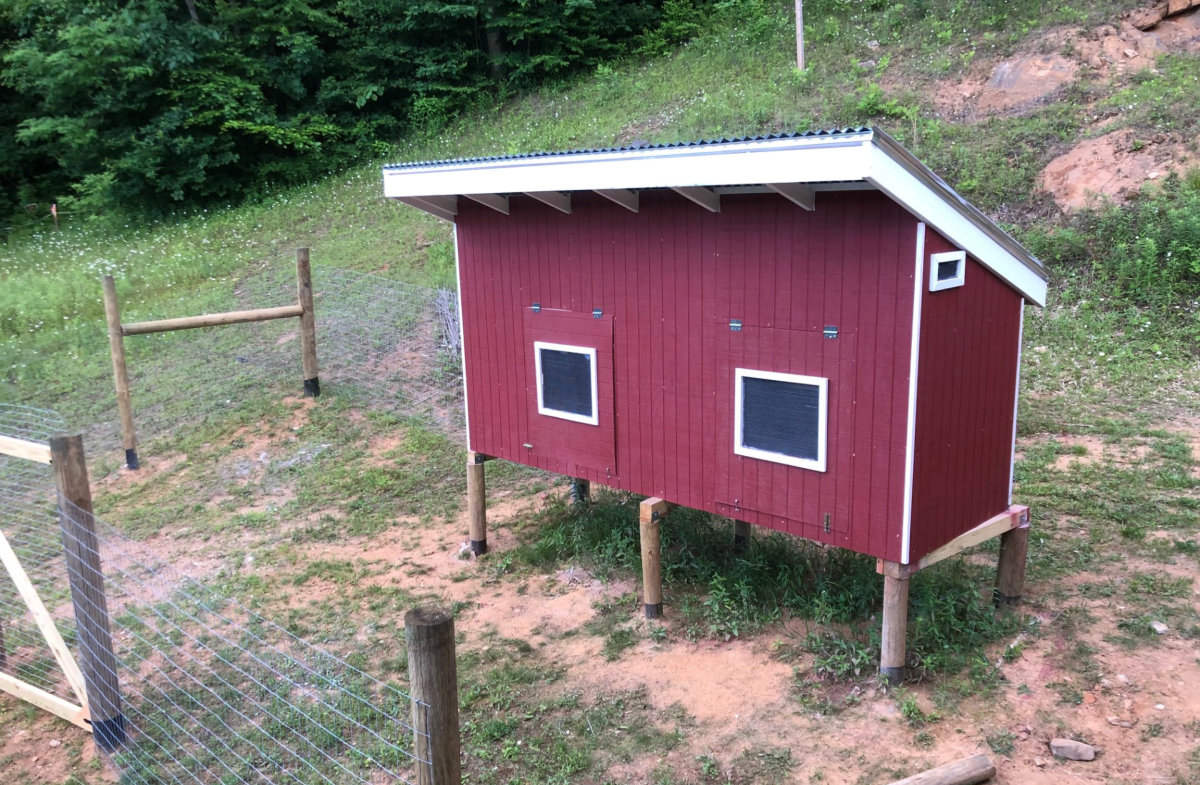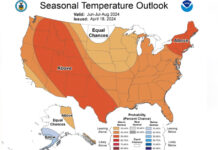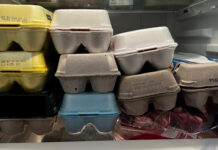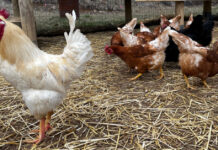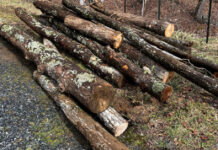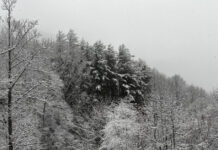Our car slipped perilously close to the side of the driveway when we tried to leave the house earlier this week. Every time I tried to move forward or back, gravity tugged us sideways towards a steep drop off. Knowing two people have slid off the road in years past, I jammed on the parking brake and left the car there. We just stayed home and waited for warmer weather.
The next day, after a good deal of shoveling and some temps in the 40s, we managed to escape both the snow and gravity’s pull. The problem now is that when we drive, it compacts the snow, leaving slushy ice. I expect it will finally be gone by Thursday when temps might climb into the 50s.
There is still a surprising amount of snow, more in places that are in shadow much of the day, or where footprints or tire tracks packed it down. The roof was still snow covered yesterday, reminding me that if we had a solar system, it would not be generating any power. The past ten-plus days represent the longest period we’ve had snow on the ground in the four years we’ve lived here. We had deeper snow last year at Christmas, but it didn’t last as long.
Like much of the county, we had wind chills well below 0°F. I broke out the insulated coverall, a sure sign of cold weather, and wore it for at least three days. Even the dog, a breed built for cold weather, didn’t seem happy when the wind was blowing in her face.
After a few days of that, the first day it reached 20° felt warm.
No Frozen Pipes
While the pipe from the spring, which we buried last year, did not freeze last year, this cold snap was much longer, giving it a thorough test. Our water kept running, which is more than I can say for some friends in the area. This has increased my confidence significantly, but I’m still going to run the water and flush all the toilets before going to bed on nights when the temperatures drop below 15°F.
The well head of a neighbor froze, even though they had made some improvements and added insulation since it froze last year. In this situation, I recommend heat tape, which kicks on when the temperature drops to 35. Other friends used a heat lamp to keep their well working.
Friends of my wife had a pipe break in their heating system. They live in an old house, so I am guessing it uses an oil boiler to heat water for a radiator. I can’t imagine how what froze, unless they ran out of oil. In any case, they were without heat for several days. I don’t know if they had an alternate source or the moved in with friends or family, but they just got it repaired.
People up and down the mountain experienced power outages, but we escaped them this time. Perhaps the frequent power outages this summer and fall eliminated all the trees that posed a danger to the lines in our area.
I was speaking to someone in the areas last Friday and we got cut off. I later found out it was because they lost power. Their power dropped our four times over the weekend.
Livestock
Our chickens survived, but there was a close call. When I walk the dog at night, I go past their chicken run to make sure the chickens are all in their coop and the automatic door has closed. The cold played havoc with the automatic door to the coop and it often froze into place. Twice it froze open and twice it froze closed. Both times were because falling or blowing snow worked into the mechanism, jamming it so the motor failed to the door. But the close call came one evening when four hens were locked out of the coop (of course, that time the door worked). I don’t know why they didn’t make it inside on time, but the temperature was 4° and looked uncomfortable as they huddle together on a roost. I had to grab each one of them and toss them inside the coop. Despite being cold, they were none too happy when I grabbed them. But that’s the way it is with livestock; they don’t know you’re saving their life.
On days with heavy snow, most of the chickens would stay inside their coop. They prefer not to step on the snow, and I can’t blame them. I use a leaf blower to blow the snow off their ladder, outside roosts, and try to blow the snow out from under the coop, where they often shelter. Once the snow stopped, I spread straw on the ground so they can stand on it instead of the snow. Most of the flock would come out when I showed up to give them warm water and throw down some scratch. On the coldest days, they would go back inside after eating and drinking. On the days when I gave them water twice a day, I gave the additional scratch with extra sunflower seeds to help keep them warm.
I will admit there was a time or two when I cut the dog’s walk short. But walking in 8 or more inches of snow is hard work. We also had blizzard conditions one day when the wind blowing the snow so hard, I had to wear goggles.
Boot Review
As I mentioned previously, my DryShod Haymaker Hi Farm-Tuff Work Boots are supposed to be suitable for temperatures from -20°F to 75°F. After some real-world experience, I did not find that to be the case, especially in deep snow. Sure, my feet stayed dry, but my toes got cold within 15 minutes despite the “Densoprene insulated bootie” they promote on the shoe box. In their favor, I will say that their soles gave me excellent traction. If I was going to wear them for hours in these conditions, I’d want some of those toe warmers or electric socks.
What I ended up doing was wearing these boots to break a trail. The next time I went out, I would wear my insulated Danner hunting boots and step in the same footprints. This worked well, especially when I wore the insulated coverall which worked as a gator and kept the snow from going down my boot. There were places where the snow drifter to at least a foot deep and some open spots where the wind scoured it to just a few inches.
Sadly, the sole on the Danner boots are wearing faster than I would like and have little tread left. This is making them slippery, especially in snow. Maybe our dirt and gravel roads are tough on them. Nonetheless, they remain my favorite boots for non-summer months.

